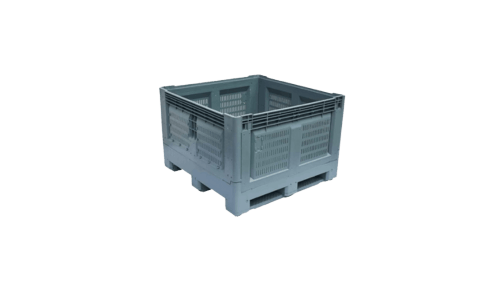When transporting goods and materials, you want to make sure no unwanted hitchhikers come along for the ride. Pest species have the potential to dramatically damage and alter the environments they are introduced to, and can easily happen during international shipping if the proper control standards are not met.
The more international trade there is, the greater the risk of unwanted pests being introduced into habitats for which they are not native. Globally, more than 520 million sea container trips are made each year, according to the Food and Agricultural Organisation of the United Nations (FAO). Even if only a fraction of a percentage of these containers harboured a pest species in the cargo, the pallets they rest on, or the containers themselves, there could be thousands of biosecurity risks nations have to deal with annually.
Many nations comply with the international standard for solid wood packaging material (ISPM 15).
Wood is a great place for pest species to hide in.
For this reason, many nations comply with the international standard for solid wood packaging material (ISPM 15) for the safe treatment of timber packaging.
However, rather than managing the issue of pests in wood pallets, it’s possible to eliminate this risk entirely thanks to plastic pallets, and bypass the need for treatment certification entirely. This helps further show the true savings in plastic pallet costs.
The High Cost Of Invasive Pest Species
Alone, imported forest pests cause more than $2 billion USD worth of damage globally, reports Phys.org.
Invasive pests damage crops too, reducing global yields by up to 40 per cent, reports FAO – an effective burden on global food production.
For businesses, the costs for treating wooden pallets and transport material to gain ISPM 15 certification is compounded by the associated risks of falling outside this compliance, leading to costly quarantines and having to renew certification.


Why Plastic Pallets Are The Right Solution
Eliminating wooden pallets and adopting plastic ones instead is a practical solution to eliminate the associated risks of unwittingly harbouring pest species, both at a domestic and international level.
Plastic pallets are exempt from ISPM 15 as they do not have the same potential to harbour pest species as wooden ones.
Choosing plastic pallets saves businesses the time and money needed to gain and ensure compliance otherwise needed for treated wood pallets, and also helps curtail the spread of harmful pests across international borders.
To find out more about why plastic pallets are the ideal transportation material, get in touch with our Eco Pallets team today.
Next: The True Environmental Impact Of Wooden Pallets









Comments are closed.